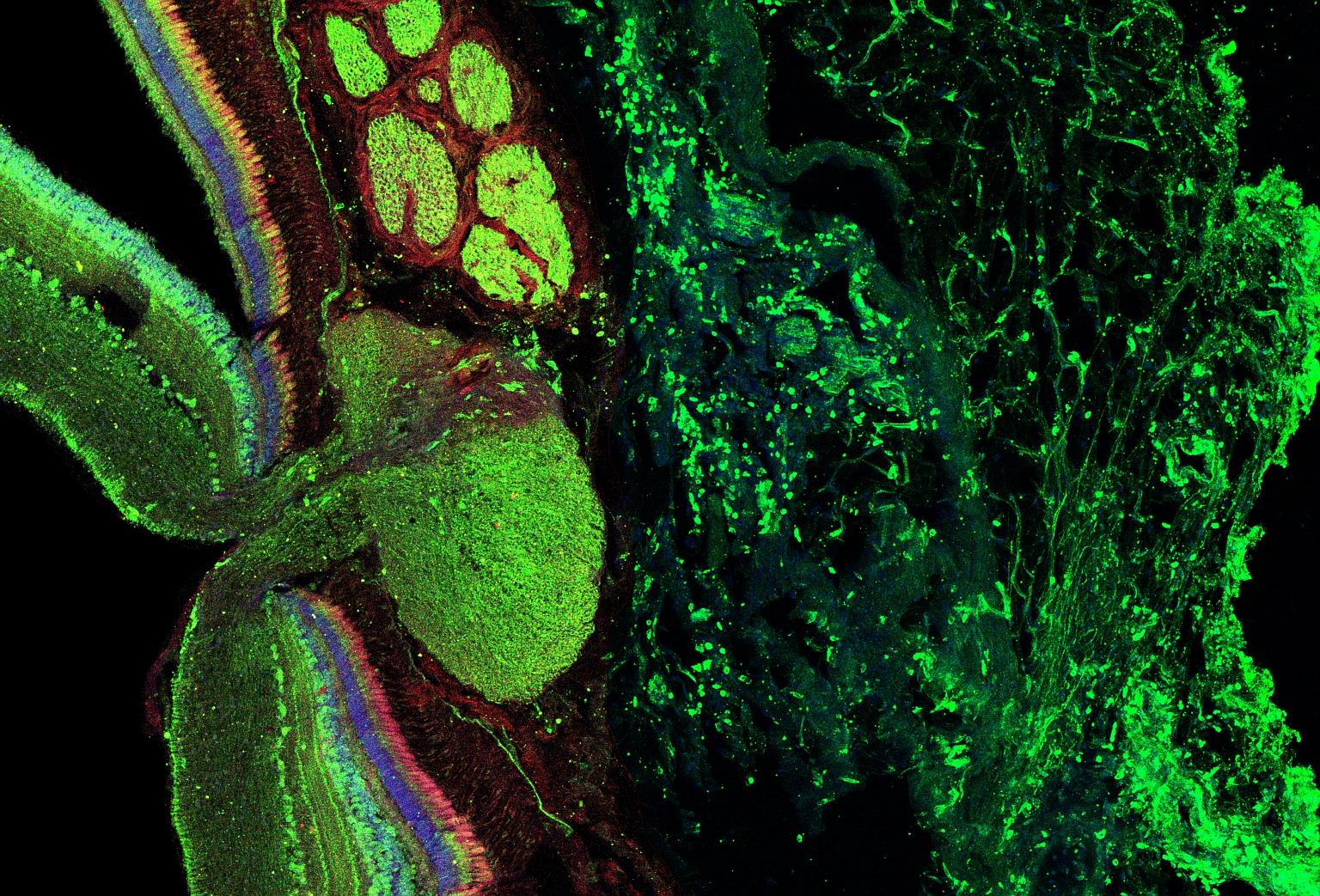Beautiful Science: Eye of a rainbow trout
Sign up now: Get ST's newsletters delivered to your inbox

PHOTO: TILL HARTER
Follow topic:
The eye of a rainbow trout, with the retina connected to the optic nerve and surrounded by a bed of capillaries. Seeing is a metabolically expensive process, requiring lots of oxygen usually delivered by red blood cells in the blood flowing through the capillaries. Unlike for the human eyeball, the bed of capillaries in the rainbow trout are found outside of the eyeball. The distance between the capillaries and the retinal tissue can potentially limit oxygen delivery to the eyes of the fish. So how does it get the oxygen it needs to help it see?
Scientists have managed to shed light on the question, identifying a mechanism which acidifies the blood as it nears the eyes of the fish. The acidification, carried out by proton-secreting enzymes in the capillaries, promotes oxygen release from the red blood cells. This boosts the retina's oxygen supply by more than 10 times, ultimately enhancing the fish's ability to process visual input. The findings by an international team of scientists from Denmark, the United States, Canada and Italy were published last month in the scientific journal eLife.

